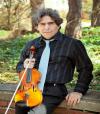What Do Large Arachnoid Cysts Indicate?

Arachnoid cysts
Detailed Answer:
Good morning. My name is Dr. Saghafi and I would like to address your question on your daughter's MRI and bilateral arachnoid cysts.
Arachnoid cysts can be of varying sizes. Some can take up virtually the entire space of the skull itself and literally push the brain out of the way to the point where a scan would appear to have little evidence of a brain inside the skull. Others can be very small. 14 mm. which equals 1.4 cm. is a relatively small size in the spectrum of things. The fact that she has 2 of them makes it more interesting.
Generally, it is believed that these water filled sacs within the skull arise during fetal growth and development. In a small percentage of cases they can be acquired after birth as the result of trauma to the brain or head and cause problems later due to their contents of blood and other things.
The decision to operate or not on these cysts is up to the discretion of the surgeon and how much they believe or feel that the cyst is responsible for symptoms. The vast majority of people with arachnoid cysts never show any symptoms during their entire life and they go completely unrecognized unless the person has an incidental scan of the head for some other reason which is often unrelated to the presence of the cyst.
In your daughter's case it would appear that she passed out during physical education class at school. Fainting is not one of the most common symptoms or consequences of arachnoid cysts and especially in your daughter's case for the location of the middle cranial fossa the expectation would be to show other problems such as headaches, nausea/vomiting, auditory hallucinations may even occur of a musical nature, hearing and visual disturbances but fainting would be more expected if she were to have a posterior fossa cyst.
Having said that, the faint itself needs to be considered as part of another possibility, which can be caused by cysts in this area and tat is, a seizure. Her physician should've recognized this as a possibility and implemented a workup to include a complete history of the fainting spell itself to see whether it was really a "faint" vs. losing consciousness as a result of an ictal event such as either a tonic clonic seizure OR a complex partial type of seizure where she may have gone out for only 30-60 seconds and then, returned.
An EEG should also be performed and if it were me I might even consider doing an inhospital video recording of her at this point for several days before concluding that no seizure activity were present.
The decision to operate or not is more to the discretion of the surgeons and hard and fast rules do not exist yet since the vast majority of cysts are known not to cause symptoms and even when symptoms are present our ability to prove a cause and effect relationship is difficult at times. If, however, the cyst contains blood as a result of a head trauma then, I believe the cyst should be drained. Or if it can be clearly shown to be causing a MASS EFFECT, meaning that it were pushing other contents of brain and structures out of the way and the patient had severe headaches with nausea/vomiting, visual disturbances, etc. for which medication does not work, again, I think surgery is reasonable to undertake.
Techniques available to surgeons these days are much more varied than in the past and so relatively minimally invasive techniques using endoscopic approaches makes these surgeries less risky to patients by putting very small holes and only disturbing the structure of the cyst with the ability to drain it fairly rapidly and effortlessly and not risk causing any damage to surrounding good brain tissue.
I think your daughter's case deserves detailed study and review by both a neurologist and neurosurgeon and that lots of dialogue between those 2 specialists needs to occur in order to make the best decision and expose your daughter to the least amount of risk both in terms of any contemplated surgery as well as the flip side which could be NO SURGERY and simple medical management depending upon what is discovered during the workup with respect to the fainting spell and whether or not these 2 cysts were responsible for the event.
If I have provided you with useful or valuable information to answer your questions I would greatly appreciate your written feedback and a STAR RATING of the response. Also, if there are no further questions or comments to ask me on the topic your CLOSING THE QUERY from your side will ensure that the network will process, credit, and archive this case for future reference.
This consultation required 60 min. of physician directed time in review, research, and final draft compilation of response for envoy.
Answered by

Get personalised answers from verified doctor in minutes across 80+ specialties



